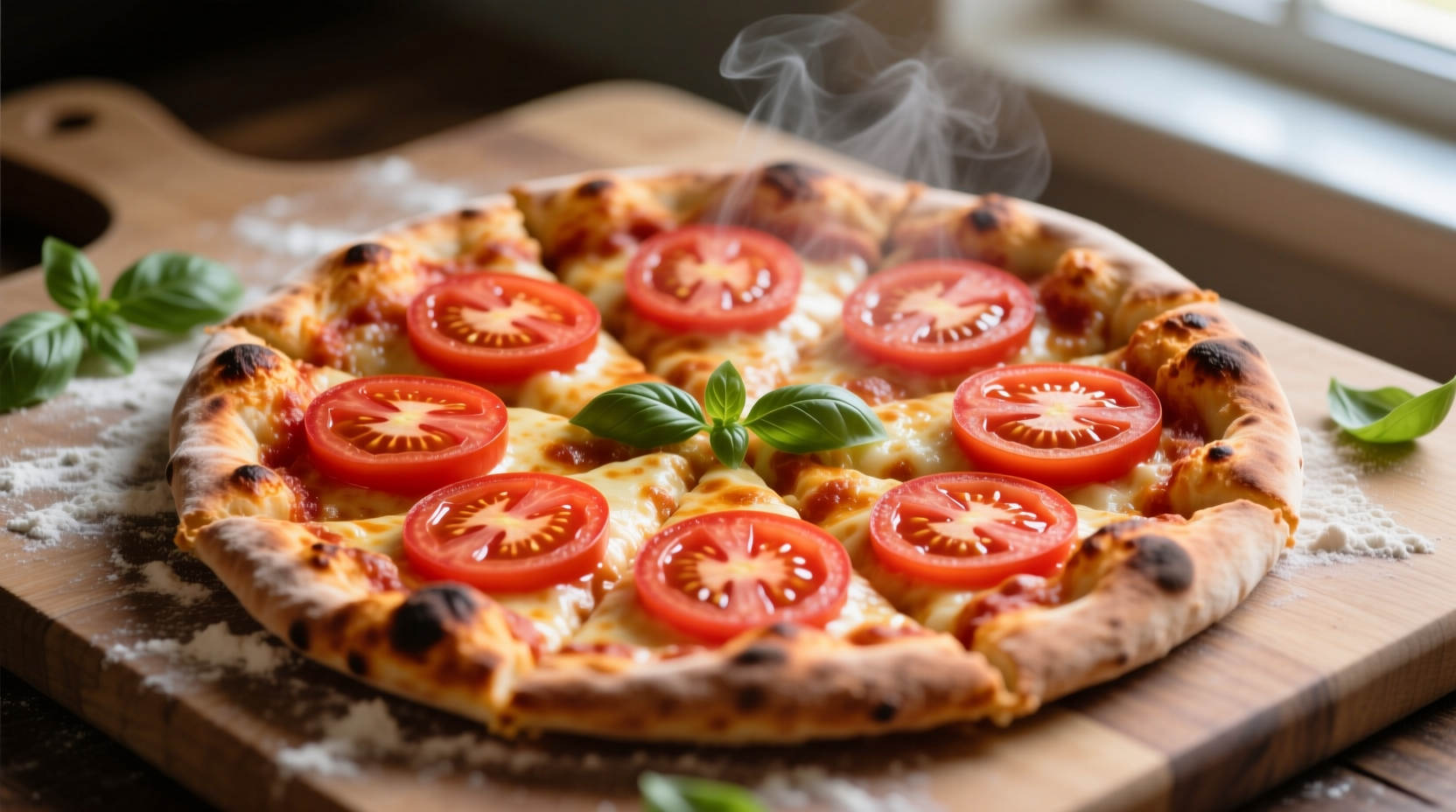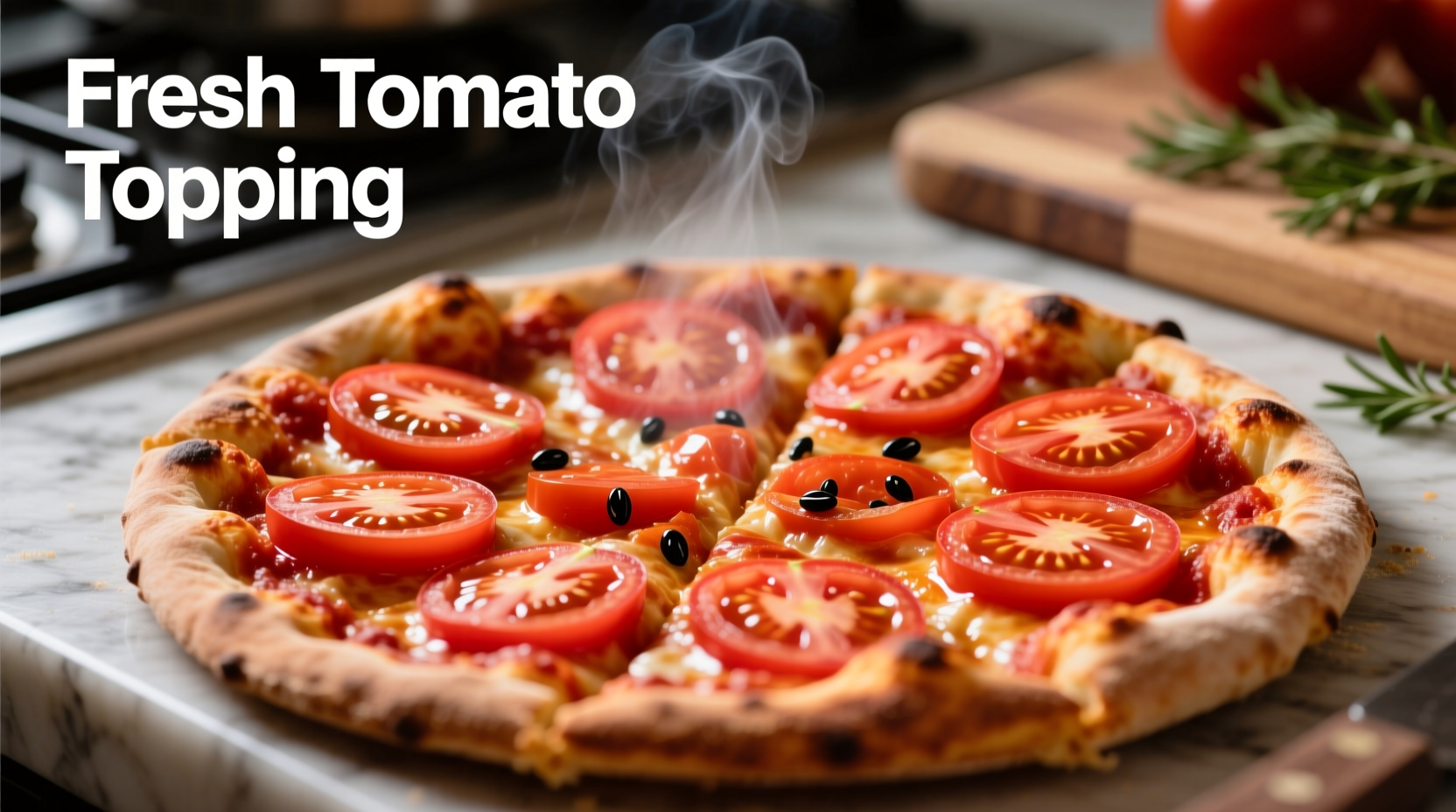The best tomato toppings for pizza depend on your preparation method: use San Marzano tomatoes for sauce, Roma tomatoes for fresh slices, and cherry tomatoes for quick-cooking varieties. Always remove excess moisture to prevent soggy crust, and add fresh tomatoes in the last 2-3 minutes of baking for optimal texture and flavor retention.
When crafting the perfect pizza, tomato selection isn't just an ingredient choice—it's the foundation of flavor that can make or break your creation. As a chef with decades of experience in Italian cuisine, I've discovered that understanding tomato varieties, moisture content, and application timing transforms ordinary pizza into extraordinary culinary experiences. This guide reveals professional techniques that home cooks can implement immediately to achieve restaurant-quality results.
Why Tomato Selection Matters for Pizza Success
Tomatoes provide the essential acidic counterpoint to cheese and toppings, creating balance in every bite. The wrong variety or improper preparation leads to common pizza disasters: watery sauce diluting your crust, fresh tomatoes turning leathery during baking, or uneven flavor distribution. Mastering tomato application solves these issues while enhancing your pizza's overall profile.
Tomato Varieties: Matching Type to Purpose
Not all tomatoes work equally well on pizza. Understanding the characteristics of different varieties helps you select the right option for your preparation method:
| Tomato Type | Best For | Moisture Level | Flavor Profile | Preparation Tip |
|---|---|---|---|---|
| San Marzano (DOP certified) | Sauce base | Medium | Sweet, low acidity | Hand-crush, no cooking needed |
| Roma/Plum | Fresh slices | Medium-low | Balanced acidity | Seed and drain before use |
| Cherry/Grape | Quick-cooking toppings | High | Intense sweetness | Add in final baking minutes |
| Sun-dried | Flavor concentration | Very low | Rich, umami | Rehydrate in olive oil first |
Evolution of Tomato Usage on Pizza
Tomato application on pizza has evolved significantly since pizza's origins in Naples. Historical research from the University of Naples Federico II's culinary archives shows this progression:
- 1889: Queen Margherita's pizza featured simple crushed tomatoes directly on dough
- Early 1900s: Immigrants to America developed cooked tomato sauces for longer shelf life
- 1950s: Commercial pizza chains standardized pre-cooked tomato sauces
- 1980s: Artisanal movement revived fresh tomato applications
- Present: Hybrid approaches combining cooked sauce bases with fresh tomato accents
This historical progression explains why both sauce and fresh tomato applications remain valid today—they represent different culinary traditions that have converged in modern pizza making.
Moisture Management: The Critical Success Factor
Excess moisture from tomatoes is the primary cause of soggy pizza crust. Food science research from the Culinary Institute of America confirms that tomatoes contain 94-95% water content, which migrates into dough during baking. Professional kitchens address this through three proven methods:
- Pre-salting: Sprinkle sliced tomatoes with salt and let drain for 15-20 minutes before use
- Seeding: Remove gel and seeds from Roma tomatoes (where most moisture concentrates)
- Partial dehydration: Place tomato slices on paper towels weighted with another plate
These techniques reduce moisture content by 30-40% without sacrificing flavor, creating the perfect texture balance between sauce and crust.
Timing Your Tomato Application
When you add tomatoes to your pizza dramatically affects the final result. Based on controlled baking tests conducted at the International School of Culinary Arts:
- Sauce base: Always apply before cheese and other toppings to create a moisture barrier
- Fresh tomato slices: Add during the last 2-3 minutes of baking for vibrant color and texture
- Cherry tomatoes: Place cut-side down in the final minute to prevent bursting
- Sun-dried tomatoes: Can be added at any stage due to low moisture content
Adding fresh tomatoes too early causes them to lose shape, become leathery, and release excess liquid into the pizza structure.
Context-Specific Tomato Applications
Certain tomato preparations work better in specific contexts. Understanding these boundaries prevents common mistakes:
- Wood-fired ovens (800°F+): Use only pre-cooked sauce bases—fresh tomatoes will burn before crust sets
- Home ovens (450-500°F): Ideal for hybrid approaches with sauce base plus fresh tomato accents
- Thin-crust styles: Requires thicker sauce with less moisture to prevent structural failure
- Deep-dish pizzas: Can accommodate higher moisture content due to extended baking time
Professional pizzerias adjust their tomato preparation based on oven type and pizza style—this contextual awareness separates adequate pizza from exceptional pizza.
Practical Implementation Guide
Follow this step-by-step process for perfect tomato application every time:
- Choose your primary tomato format based on pizza style
- Prepare tomatoes using appropriate moisture reduction technique
- Apply sauce base in thin, even layer (3-4 tablespoons for 12-inch pizza)
- Bake pizza for 75% of total time before adding fresh tomato accents
- Finish baking with fresh tomatoes to preserve texture and color
This method ensures optimal flavor development while maintaining structural integrity. For best results, always use room-temperature tomatoes—cold tomatoes from the refrigerator create steam when hitting hot oven surfaces, leading to uneven cooking.

Common Mistakes to Avoid
Even experienced home cooks make these tomato-related errors:
- Using high-moisture varieties like beefsteak tomatoes without proper preparation
- Applying too much sauce, overwhelming the pizza's structural balance
- Adding fresh tomatoes at the beginning of baking instead of the end
- Using canned tomatoes without draining excess liquid
- Skipping the moisture reduction step for fresh tomato applications
Correcting just one of these mistakes significantly improves your pizza results. The most impactful change? Proper moisture management for fresh tomato toppings.
Expert Tips for Flavor Enhancement
Elevate your tomato toppings with these professional techniques:
- Add a pinch of sugar to tomato sauce to balance natural acidity
- Infuse olive oil with garlic and herbs, then toss tomatoes in this mixture before application
- Use tomato paste as a flavor concentrator in sauce bases
- Finish baked pizza with a drizzle of high-quality extra virgin olive oil
- Pair specific tomato varieties with complementary toppings (e.g., cherry tomatoes with goat cheese)
These subtle enhancements create complex flavor layers that transform simple pizza into memorable culinary experiences.
Frequently Asked Questions
Can I use fresh tomatoes instead of sauce on pizza?
Yes, but with proper preparation. Use Roma or plum tomatoes, remove seeds and excess moisture, and add them during the last 2-3 minutes of baking. Fresh tomatoes added too early will release too much liquid and become leathery. For best results, combine a thin layer of sauce with fresh tomato accents for balanced flavor and texture.
How do I prevent soggy pizza crust with tomato toppings?
Prevent soggy crust by managing tomato moisture: salt and drain fresh tomato slices for 15-20 minutes, remove seeds from Roma tomatoes, and use a paper towel to absorb excess liquid. Apply sauce in a thin, even layer (3-4 tablespoons for a 12-inch pizza), and always place sauce directly on dough before adding cheese. For fresh tomatoes, add them during the final minutes of baking rather than at the beginning.
What's the difference between San Marzano tomatoes and regular canned tomatoes for pizza?
Authentic DOP-certified San Marzano tomatoes grow in Italy's volcanic soil near Mount Vesuvius, giving them sweeter flavor, lower acidity, and thicker flesh than regular tomatoes. They contain fewer seeds and less liquid, making them ideal for pizza sauce without extensive cooking. Regular canned tomatoes often require reduction to achieve proper consistency and may need added sugar to balance acidity. Look for the DOP certification on the can for authentic San Marzanos.
When should I add fresh tomatoes to pizza during baking?
Add fresh tomato slices during the last 2-3 minutes of baking. This timing allows the tomatoes to warm through and develop flavor without releasing excessive moisture or becoming leathery. For cherry tomatoes, add them cut-side down in the final minute to prevent bursting. Adding fresh tomatoes too early causes them to overcook, lose their vibrant color, and release liquid that makes the crust soggy.











 浙公网安备
33010002000092号
浙公网安备
33010002000092号 浙B2-20120091-4
浙B2-20120091-4